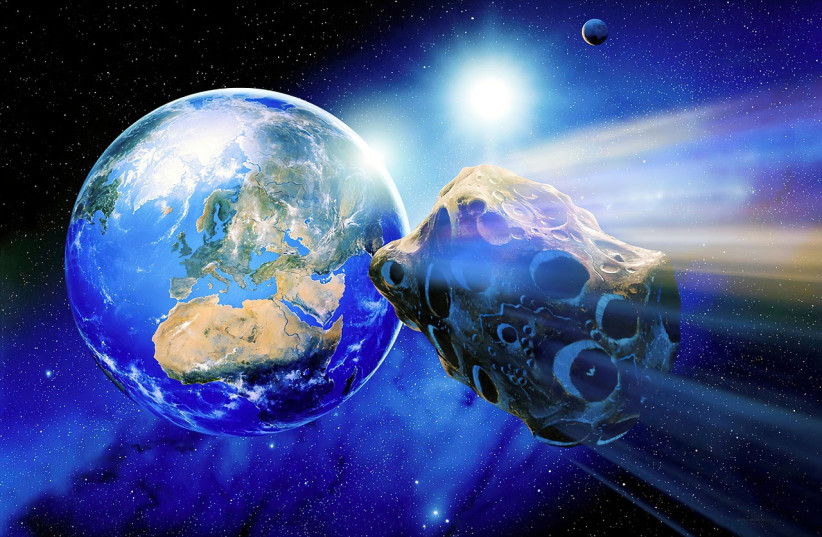An asteroid the size of over 15 alpacas is set to pass by the Earth on Monday, June 19, possibly at a very close distance, according to NASA's asteroid tracker.
The asteroid set to pass by has been designated 2016 LK49 and is set to follow two other asteroids that will also pass on Sunday.
How big is the asteroid coming towards Earth in 2023?
Asteroid 2016 LK49 is estimated to be as much as 38 meters in diameter, according to the Center for Near-Earth Object Studies (CNEOS) at NASA's Jet Propulsion Laboratory (JPL).
To put such a metric in perspective for the metrically challenged, consider the alpaca.
According to the Smithsonian, the alpacas, are distinguished from their cousins the llamas by being smaller, having a head and body length of as much as 2.2 meters, with a tail length of up to 25.4 centimeters. That means that, overall, an alpaca can be as tall as 2.45 meters.
 Pictured here is Tyson the alpaca, part of a species of animals used to measure an asteroid (Illustrative). (credit: KAROLINSKA INSTITUTE/PRECLINICS GMBH/HANDOUT VIA REUTERS)
Pictured here is Tyson the alpaca, part of a species of animals used to measure an asteroid (Illustrative). (credit: KAROLINSKA INSTITUTE/PRECLINICS GMBH/HANDOUT VIA REUTERS)In other words, asteroid 2016 LK49's diameter is in theory a little more than 15 alpacas lined up head to tail in a row.
However, asteroid 2016 is also coming in very fast – far faster than any alpaca could ever hope to be. NASA estimated its velocity as being as much as 19.41 kilometers per second, or 69,876 kilometers per hour. Essentially, that's almost Mach 57, or over 57 times the speed of sound.
Their alpaca-ed together: What other asteroids passed by Earth earlier?
Asteroid 2016 LK49 may be coming alone, but two other asteroids are set to come before it.
Here are these earlier asteroids, which are set to pass on Sunday, June 18.
- Asteroid 2023 LV has a diameter of as much as 57 meters. That's over 172 13-inch macbook pro laptops.
- Asteroid 2023 LW has an estimated diameter of 55 meters. That's over 192 NFL-sized footballs.
Is an asteroid going to hit the Earth in 2023?
Asteroid 2016 LK49 might be coming much closer to Earth than most other asteroids would.
For context, the Moon orbits the Earth at a distance of around 384,000 kilometers. However, while the nominal distance for asteroid 2016 LK49 is over 6 million kilometers away, its minimum close approach distance was calculated by NASA to be just over 364,000 kilometers.
However, that isn't to say we are in any danger from this asteroid. Yes, if it hit the Earth, it may cause some destruction, but it would be highly localized due to its smaller size.
Consider an asteroid that impacted the Earth earlier this year, asteroid 2023 CX1. This asteroid hit near Normandy, France, and didn't result in any damage.
That's because when small asteroid impacts do happen, they usually cause no more harm than an extremely loud explosion.
But all that aside, NASA already did the math for an impact risk, and the Earth isn't at risk of asteroid 2016 LK49 hitting us.
Do we have any way to stop an asteroid from hitting the Earth?
Yes, humans now can stop an asteroid's impact, provided we have enough time in advance.
This is thanks to years of research from scientists all over the world in the field of planetary defense.
So far, the best planetary defense tool at our disposal is kinetic deflection. This is exemplified by NASA's Double Asteroid Redirection Test (DART) Mission, which successfully crashed into the faraway asteroid Dimorphous, altering its orbit.










